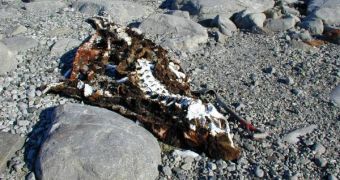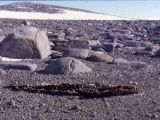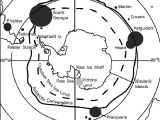More than 8,000 years ago, in the Holocene Period, the Ross Sea Embayment was covered in a thick layer of ice, which prevented a too large diversity of species from gaining a strong foothold in the region. As the ice progressively retreated, elephant seals (Mirounga leonina) adopted the emergent habitat and spread around it in sprawling populations, as evidenced by the large variety of genetic signatures recovered from fossils in the area. The new research demonstrates how demographic and evolutionary processes within and among species are driven by sudden climate change, and highlights potential dangers for these species at the present time, when the ices are again melting at a fast rate.
An international investigation effort, comprised of scientists from the United States, South Africa, Italy and the United Kingdom, and led by Durham University School of Biological and Biomedical Sciences Professor Rus Hoelzel, analyzed fossilized remains of elephant seals in the region, and took DNA samples of them, which led the team to this conclusion. Their research was funded by the US National Science Foundation (NSF), and details of it appear in the latest issue of the academic journal PLoS Genetics.
“In general, this approach of looking to the past to understand what might happen in the future has good potential for predicting the impact of environmental change in both marine and terrestrial systems. We’ve shown how a highly mobile marine species responded to the gain and loss of new breeding habitat. The new habitat was quickly adopted, probably because seals migrate annually into Antarctic waters to feed. However, when the ice returned and the habitat was lost, only a small proportion returned to the original source population. The Antarctic population crashed and much diversity was lost,” Hoelzel says.
“Using ancient DNA, we were able to track the dynamics and diversity of a population from its foundation, through to its extinction, in the context of Holocene climate change. We learned that new habitat[s] emerging within the species’ migratory range could be quickly taken advantage of, but that the reverse was not true. The movement patterns of seals from this Antarctic breeding site would have been unlikely to take them near other potential breeding sites, and so when their breeding site was lost, their numbers crashed,” the researcher adds.
“The seals that discovered the new breeding site had things good, because food was abundant and nearby, however when the ice returned, the new colony collapsed and only a few seals made it back to their original home. This illustrates the importance of understanding the behavior and life history of a species, in order to model how it may be able to respond to rapid change,” he concludes.

 14 DAY TRIAL //
14 DAY TRIAL // 

